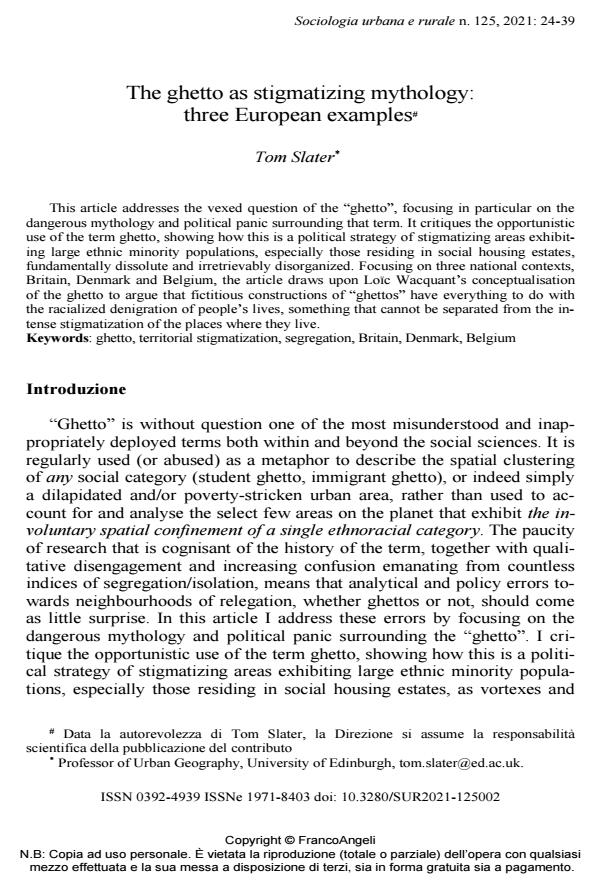The ghetto as stigmatizing mythology: three European examples
Titolo Rivista SOCIOLOGIA URBANA E RURALE
Autori/Curatori Tom Slater
Anno di pubblicazione 2021 Fascicolo 2021/125
Lingua Italiano Numero pagine 16 P. 24-39 Dimensione file 302 KB
DOI 10.3280/SUR2021-125002
Il DOI è il codice a barre della proprietà intellettuale: per saperne di più
clicca qui
Qui sotto puoi vedere in anteprima la prima pagina di questo articolo.
Se questo articolo ti interessa, lo puoi acquistare (e scaricare in formato pdf) seguendo le facili indicazioni per acquistare il download credit. Acquista Download Credits per scaricare questo Articolo in formato PDF

FrancoAngeli è membro della Publishers International Linking Association, Inc (PILA)associazione indipendente e non profit per facilitare (attraverso i servizi tecnologici implementati da CrossRef.org) l’accesso degli studiosi ai contenuti digitali nelle pubblicazioni professionali e scientifiche
Questo articolo affronta l'annosa questione del "ghetto", soffermandosi in particolare sulla pericolosa mitologia e sul panico politico che circonda il termine. A partire dall'uso opportunistico del termine ghetto, si mostra come questo sia una strategia politica di stigmatizzazione di aree in cui vivono in gran parte le minoranze etniche, in particolare quelle che risiedono in complessi di edilizia popolare, fondamentalmente dissoluti e irrimediabilmente disorganizzati. Concentrandosi su tre contesti nazionali, Gran Bretagna, Danimarca e Belgio, l'articolo attinge alla concettualizzazione del ghetto di Loïc Wacquant per sostenere che le costruzioni fittizie di "ghetti" hanno tutto a che fare con la denigrazione razziale della vita delle persone che non può essere separato dalla intensa stigmatizzazione dei luoghi in cui vivono.
Parole chiave:ghetto, stigmatizzazione territoriale, segregazione, Gran Bretagna, Danimarca, Belgio.
- De-stigmatizzazione territoriale e pratiche di commoning. Il caso del quartiere romano del Quarticciolo Matteo Cerasoli, Francesca Messineo, Gwon Son, in SOCIOLOGIA URBANA E RURALE 136/2025 pp.29
DOI: 10.3280/SUR2025-136004
Tom Slater, The ghetto as stigmatizing mythology: three European examples in "SOCIOLOGIA URBANA E RURALE" 125/2021, pp 24-39, DOI: 10.3280/SUR2021-125002